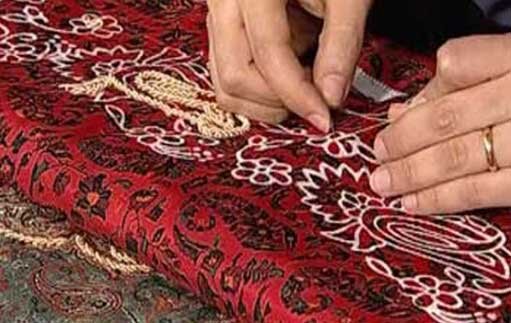Neglected craft of Sermeh-doozi revived in northeast Iran

TEHRAN – Sermeh-doozi, a forgotten field of handwoven textile that was once flourished in Golbahar county of the northeastern Khorasan Razavi province, has been revived recently by an indigenous artisan, a local tourism official has announced.
Sermeh-doozi was one of the main crafts in the region for years, but it had been fallen into oblivion, CHTN quoted Mohammad Taherian as saying on Sunday.
The craft was revived with the help of an artisan who established a workshop dedicated to the field, the official added.
The craft is now being practiced by 10 people and 25 people are being trained currently, he explained.
A sum of 500 million rials (some $ 12,000 at the official exchange rate of 42,000 rials per dollar) has been invested for the workshop, he noted.
The official noted that a large percentage of handicraft artisans in the county are women, so reviving handicraft fields could significantly boost women's employment prospects.
Sermeh-doozi is a traditional Iranian style of embroidery, which is estimated to date back to the Achaemenid era (c. 550 – 330 BC).
In this style of embroidery, gold and silver threads are utilized to make decorating patterns, mostly paisley patterns, on the surface of the fabric, mainly Termeh, which is a type of expensive Iranian handwoven cloth.
The combination of Termeh and gold and silver threads constitutes Sermeh-doozi, which is widely considered a luxury handicraft product by Iranians.
Samples of Sermeh-doozi can be seen on table cloths, flags, embroidered clothing, religious objects, and many household items.
Nowadays, threads twisted out of cheaper metals and alloys and metals like yarns have replaced gold and silver to make it more affordable for people of all walks of life.
The art, which reached its zenith in the Safavid era (1501–1736) is mostly practiced in the cities of Isfahan, Kashan, Yazd, and Qazvin.
With 14 entries, Iran ranks first globally for the number of cities and villages registered by the World Crafts Council, as China with seven entries, Chile with four, and India with three ones come next.
ABU/AFM
Leave a Comment